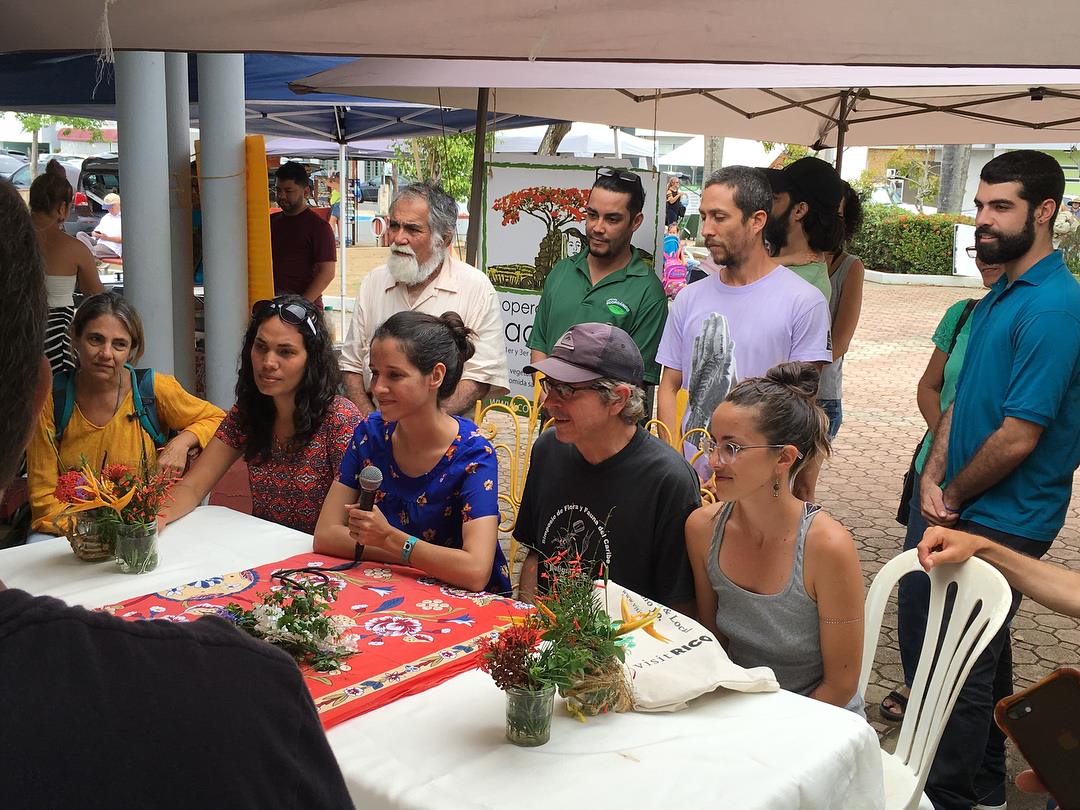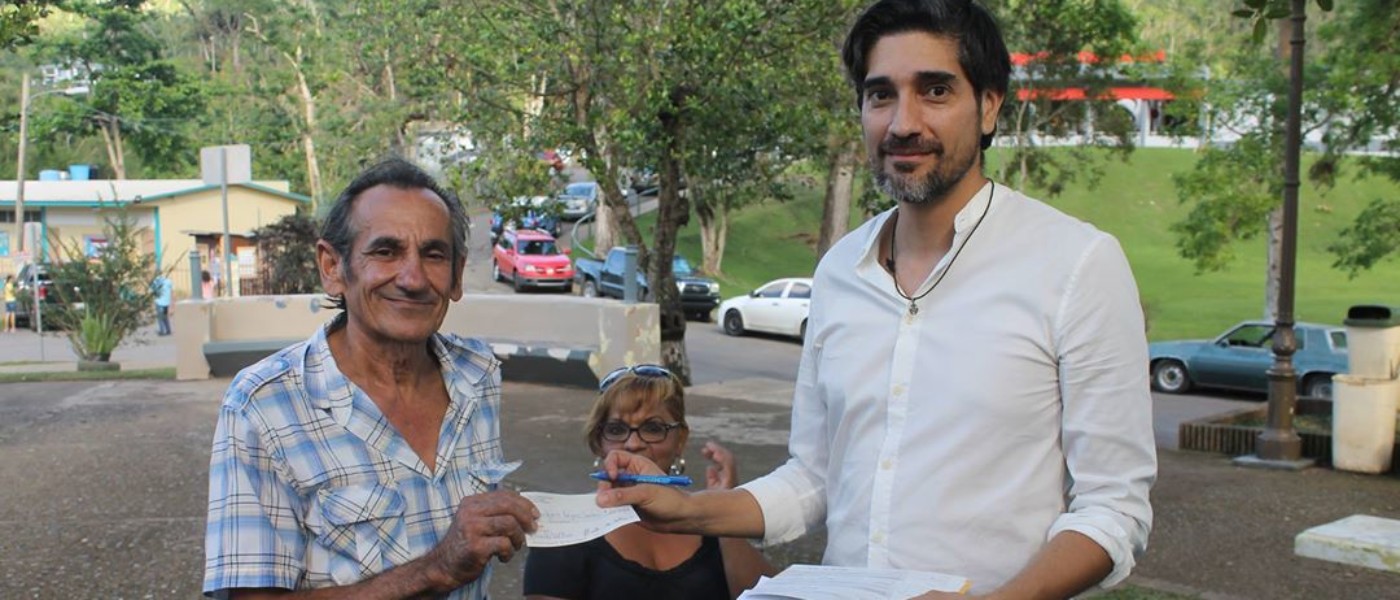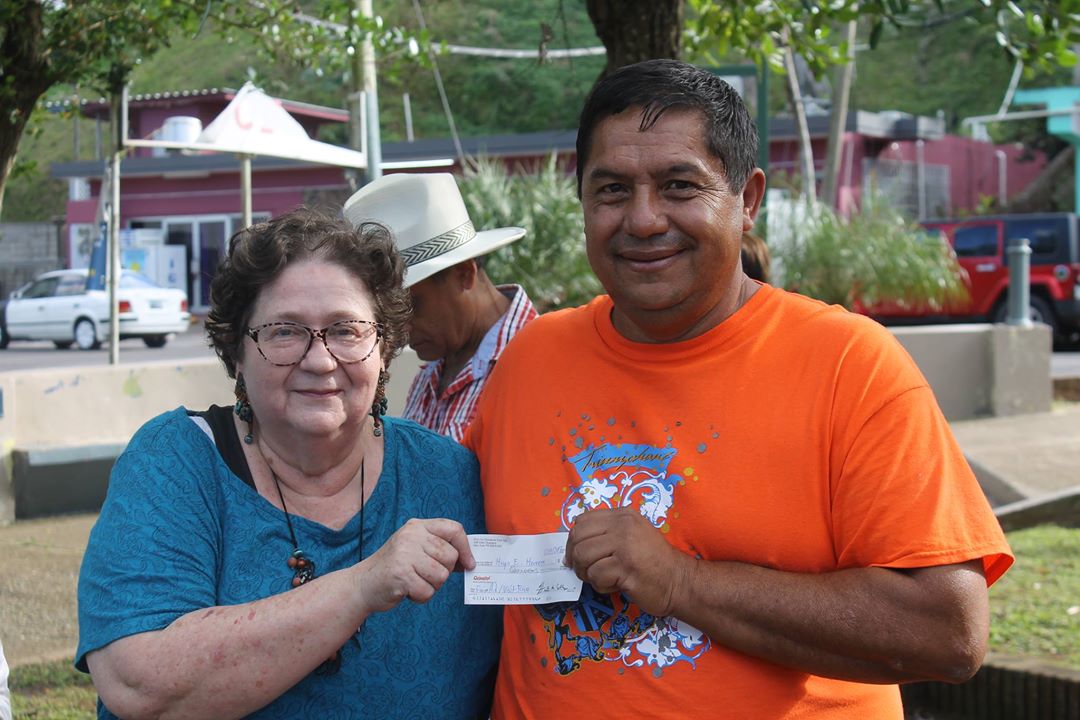In 1993, seemingly endless rain caused the Mississippi and Missouri Rivers to overflow their banks. The flooding caused billions of dollars of damage to farms and rural communities around the Midwest and left many homeless. In response, Farm Aid established the Family Farm Disaster Fund, an ongoing program that serves farmers affected by natural disasters. We are proud that 100% of the money donated to the FFDF directly serves impacted farmers in the form of emergency grants or farmer trainings on how to access federal disaster aid, recover from disaster, and build reliance into the farm in preparation for a future disaster
Farm Aid activated the Family Farm Disaster Fund in Puerto Rico four days after Hurricane Maria struck. Farm Aid’s usual strategy after a disaster is to reach out to a farm organization on the ground in the affected community. Through 33 years of work assisting farmers in the U.S., we typically have a close partner we can join up with–we raise awareness of the need, and money, and pass it along to the organization to provide the on-the-ground response. But Farm Aid had not previously worked in Puerto Rico, despite it being part of the United States. So we did some research and reached out to Visit Rico, a non-profit organization in Puerto Rico that manages farmers markets and trains Puerto Rican farmers in agroecology. Looking back, Camille Collazo, Visit Rico’s Executive Director, marvels at how efficiently her organization was able to respond to farmers with Farm Aid’s support. “One thing we’re very proud of is that we didn’t waste time with red tape,” she says.

Camille (holding the microphone), the Regrow Puerto Rico team, and local farmers at an event to thank Cape Cod Organic Farm for their fundraising efforts.
In the days after the storm, internet and phone lines across the island were down, meaning that farmers in remote spots on the island were hard to contact. And that’s where Visit Rico comes in. Their work prior to the storm was dedicated to fortifying the agricultural economy in Puerto Rico, so their knowledge and contacts were critical. Their team was persistent, running off adrenaline to respond quickly to farmers who had lost everything.
During the critical first few weeks, they were able to contact remote farmers to assess their immediate needs. Farm Aid raised enough support for 60 farmers to each receive a check for $500, many of which were hand delivered by the Visit Rico staff. That money gave farmers immediate help: they were able to put new plants in the ground, and all of them were back selling produce at the farmers markets this spring! Camille believes it is remarkable how quickly they’ve been able to go back into production.
With so much destruction on the island to address, it was important that farmers did not get lost in the fray. “With so many needs in Puerto Rico, we helped position agriculture as one of the top priorities. We didn’t want our farmers to feel neglected,” Camille says. A few of the farmers that received grant checks were insured, but the response from insurance companies was belated. Camille tells us that the money that Farm Aid sent was the first to reach farmers who were in the midst of dire situations. “It was perfect timing,” she said. For farmers who had a million and one concerns after the storm, Camille says the grants showed that we were there in solidarity. She said, “It allowed farmers room to breathe. For them, that’s been invaluable.”
Farm Aid raised enough support for 60 farmers to each receive a check for $500, many of which were hand delivered by the Visit Rico staff.
Farm Aid’s response created a ripple effect within the farmer community, according to Camille. “When people here realized that Farm Aid was helping Puerto Rico along with other states affected by disasters, it was like a spotlight on our farmers. People in Puerto Rico said ‘let’s not forget our farmers.” Farmers felt appreciated and encouraged by that external support. “You have no idea how huge that was,” she says.
An outpouring of support has come from the 3 million Puerto Ricans living on the island, as well as those living abroad, in the diaspora. “On the island, we were overwhelmed with work to be done,” Camille says. “Now we want to include the diaspora even more. They are eager to collaborate.” The farm community has reached out too. Last November, farmers and chefs from Cape Cod organized a “Farm to Farm” fundraiser and worked with Farm Aid and Visit Rico to get that money to their fellow farmers in Puerto Rico. With support from their Cape Cod community, they raised $20,000 to help farmers get back on their feet. When asked how other Americans could best show their support now, Camille had a quick answer: “Come visit us!” Agritourism is a meaningful way to show family farmers how much they matter.
Now that the immediacy of the disaster has passed, Camille and Visit Rico have been looking ahead at the opportunity to reshape agriculture on Puerto Rico. Farmers who use sustainable, ecological farming practices have been the focus of Visit Rico’s mission, but Farm Aid’s request that relief funds help both conventional and sustainable family farmers was, as Camille puts it, “a wakeup call to be even more inclusive than we had been. We needed to broaden our scope and make a bridge to share sustainable practices with an open mind.” Since the storm, Camille says the ecological farmers have had an easier time growing new crops because their soil was more resilient. “We hope it’s a lesson we can share with everyone.”
Going forward, Camille sees that all family farmers will face similar issues, as well as new opportunities. She believes farmers must do strategic planning around climate change. “Overall, we were not prepared; we need to forge alliances for interdependence to achieve food sovereignty in the future,” says Camille. She thinks it will be vital to prioritize green energy, stewardship of natural resources, and disaster resilient crops. “Only this will prepare us for future natural events and rebuild our agriculture.” Camille thinks it’s possible. Since the hurricane, Puerto Ricans see just how essential farmers are to their lives and culture. Of course, she points out, eating canned food for months was a good reminder as well. She sees progress already but she cautiously adds, “It had to take a hurricane for all this to happen.”




